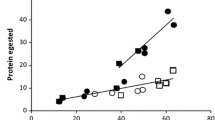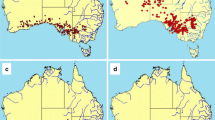Abstract
Due to rapidly changing physical and biochemical characteristics of growing leaves, correlations between traits of foliage biochemistry and the performance indices of flush feeding herbivores may vary considerably following relatively minor changes in experimental conditions. We examined the effects of the seasonal and inter-tree variation of a comprehensive array of biochemical compounds on the success of an early season geometrid, Epirrita autumnata, feeding on maturing foliage of mountain birch, Betula pubescens ssp. czerepanovii. We monitored the concentrations of individual phenolics, sugars, total nitrogen, nitrogen of proteins, and nitrogen of soluble compounds, water and acetone-insoluble residue. Simultaneously we recorded larval consumption, physiological performance, growth, and pupal mass of E. autumnata. We found significant phenological changes in almost all leaf traits measured. In bioassays with half-grown leaves, leaf gallotannin concentrations showed a nonlinear effect: in trees with high foliar gallotannin concentrations (over 10 mg g−1), physiological performance was strongly reduced by high gallotannin concentrations. In trees with lower gallotannin concentrations, on the other hand, larval growth was reduced by soluble proanthocyanidins, not gallotannins. Differences between high and low gallotannin trees largely depended on phenology, i.e., on the age of leaves. However, not all the differences in leaf traits between late (with high gallotannin concentrations at the time of the bioassay) and early flushing trees disappeared with leaf maturation, indicating that there is also phenology-independent variance in the tree population. In the full-grown leaves of all the study trees, low concentrations of water and of nitrogen of proteins (but not nitrogen of soluble compounds) were the main factors reducing pupal masses of E. autumnata, while neither gallotannin nor proanthocyanidins now played a significant role. The observed change in the factors underlying leaf quality (from gallotannins and proanthocyanidins to nitrogen and water) relate to the activity of the shikimate pathway and the formation of cell walls: gallotannins and proanthocyanidins are both produced in the pathway, and these tannins are assumed to contribute – via binding into cell walls – to tough and durable cell walls. Interestingly, low quality of leaves did not automatically translate into low foliar consumption (i.e., benefits to the tree). On the trees with young, high gallotannin leaves, larvae actually increased consumption on low quality foliage. In the group of trees with slightly more developed, low gallotannin leaves, the quality of leaves did not clearly modify amounts consumed. In full-grown leaves, low leaf quality strongly reduced leaf consumption. These results emphasize the strong influence of tree phenology on the relationships between biochemical compounds and the herbivore.
Similar content being viewed by others
Author information
Authors and Affiliations
Additional information
Received: 30 November 1998 / Accepted: 1 March 1999
Rights and permissions
About this article
Cite this article
Kause, A., Ossipov, V., Haukioja, E. et al. Multiplicity of biochemical factors determining quality of growing birch leaves. Oecologia 120, 102–112 (1999). https://doi.org/10.1007/s004420050838
Issue Date:
DOI: https://doi.org/10.1007/s004420050838




